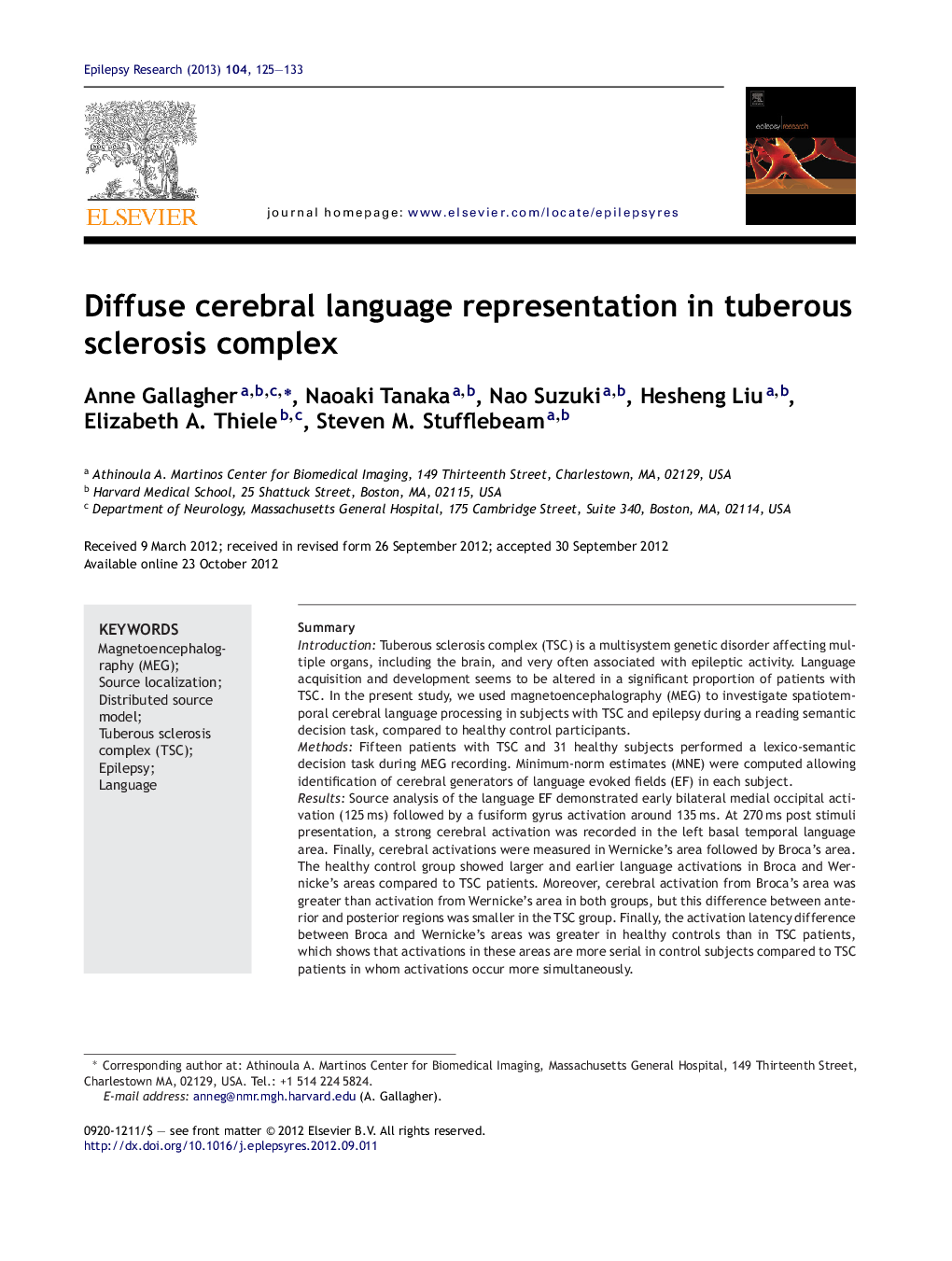| کد مقاله | کد نشریه | سال انتشار | مقاله انگلیسی | نسخه تمام متن |
|---|---|---|---|---|
| 3052087 | 1579918 | 2013 | 9 صفحه PDF | دانلود رایگان |

SummaryIntroductionTuberous sclerosis complex (TSC) is a multisystem genetic disorder affecting multiple organs, including the brain, and very often associated with epileptic activity. Language acquisition and development seems to be altered in a significant proportion of patients with TSC. In the present study, we used magnetoencephalography (MEG) to investigate spatiotemporal cerebral language processing in subjects with TSC and epilepsy during a reading semantic decision task, compared to healthy control participants.MethodsFifteen patients with TSC and 31 healthy subjects performed a lexico-semantic decision task during MEG recording. Minimum-norm estimates (MNE) were computed allowing identification of cerebral generators of language evoked fields (EF) in each subject.ResultsSource analysis of the language EF demonstrated early bilateral medial occipital activation (125 ms) followed by a fusiform gyrus activation around 135 ms. At 270 ms post stimuli presentation, a strong cerebral activation was recorded in the left basal temporal language area. Finally, cerebral activations were measured in Wernicke's area followed by Broca's area. The healthy control group showed larger and earlier language activations in Broca and Wernicke's areas compared to TSC patients. Moreover, cerebral activation from Broca's area was greater than activation from Wernicke's area in both groups, but this difference between anterior and posterior regions was smaller in the TSC group. Finally, the activation latency difference between Broca and Wernicke's areas was greater in healthy controls than in TSC patients, which shows that activations in these areas are more serial in control subjects compared to TSC patients in whom activations occur more simultaneously.ConclusionsThis is the first study to investigate cerebral language pattern in patients with TSC. Compared to healthy controls, atypical neuromagnetic language responses may reflect cerebral reorganization in these patients in response to early epileptogenic activity or presence at birth of multiple brain lesions.
Journal: Epilepsy Research - Volume 104, Issues 1–2, March 2013, Pages 125–133